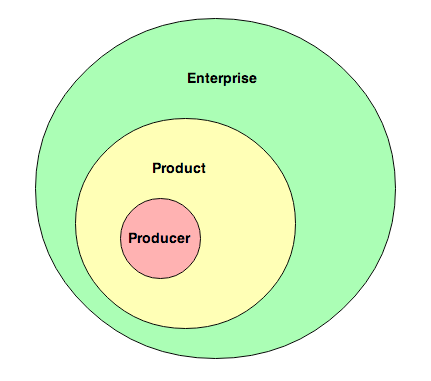From Producer to Product and Beyond
Producer
As a bottom-up guy, I've always needed to see the gears working to trust that the machine will do what I say it will. More than that, I believe that understanding the machine provides an unmatched power to deploy it.
So to confidently build a web-based tech business, I had to start by learning web development. But as important as that is, it's also easy to get caught up in the sprint and lose sight of the greater goal. Spending nights and weekends feverishly coding sure feels like a productive use of time and it can be a fantastic creative outlet but it isn't the optimal path to building value.
Recalling the Simple Model of Value Creation I laid out before, I've so far been learning the skills of a producer, the most granular level of value. It's an incredibly important skill set -- the best generals were soldiers and the best founders were product grunts too.

